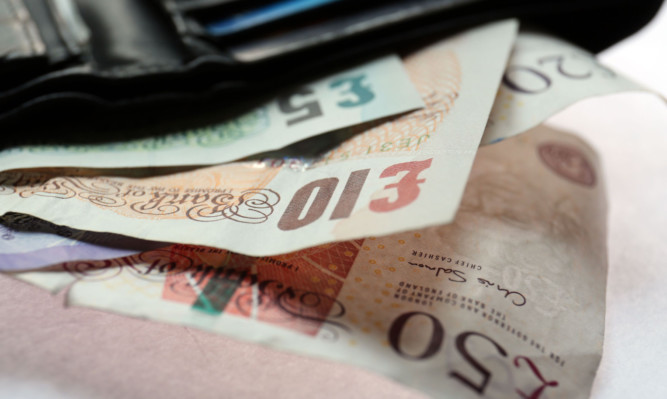People in Scotland have seen a greater rise in the level of personal disposable income over the last year than almost any other part of the UK.
Only people in the East Midlands saw a bigger rise.
Disposable incomes in Scotland rose from 5.2% to 10.7% over the past 12 months, with the average person left with £282 a month in disposable income.
The Disposable Income Index from Scottish Friendly found that on average across the UK, people have 9.7% of their salary left each month after bills and essentials have been paid for.
This was up from 5.2% this time last year, equating to a national average of £255 per person a month.
Tumbling prices and falling unemployment have been contributing factors to the growth, which in turn has led to people saving more.
The index found a 7% rise in those contributing to savings or investments each month, meaning about 30.5 million people across the UK are saving regularly.
The average amount being saved has almost doubled, rising from £72 a month per person on average last year to £140 in 2015, which means the nation is putting aside about £42.7 billion each month.
The demographic with the largest number of savers is the 18-24 year olds, with 72% putting an average of £156 away each month.
Calum Bennie, savings expert at Scottish Friendly, said: “It has been a good year for much of the UK, and Scotland can be particularly pleased with itself.
“The general feeling is that with low inflation and unemployment falling, the future for Scots is looking brighter.
“The Bank of England Governor, Mark Carney, said that families will start to feel richer than they have done in a decade and the statistics are starting to support this 2015 looks set to be the year of the savers.
“It is heartening to see such a high percentage of youngsters take up the savings mantle.
“Leaving school during a period of economic turmoil and austerity seems to have had a galvanising effect on a generation that, perhaps due to pressures such as having to pay large deposits for houses, is now more geared to accumulating wealth rather than spending it.”
